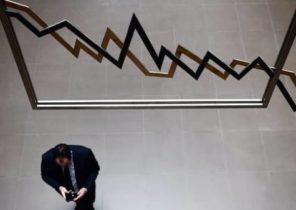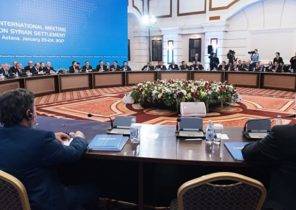
The recent attempt of Finance Ministers “Big twenty” agreed to take the position in support of free trade has failed. This shows the gap that emerged between the U.S. and other major economies. Washington argues that the negative balance of trade retards economic growth, and prefers a two-pronged approach to imbalances in trade. This implies, in particular, and protectionist measures — abandonment of the TRANS-Pacific partnership, a revision of the North American agreement on free trade (NAFTA) and limit the influence of the WTO. But that’s flawed logic.
The total US trade deficit and surplus in bilateral trade, and even China, very poorly connected with each other. And it is important is the overall balance, not the bilateral balances.
Let’s take a simplified example — a world in which all three countries. Country A sells something to country B, country B sells something comparable to the amount of country b, and country b sells something, too, in a comparable amount of country A. In the bilateral relations between these countries there is a deficiency or a surplus, but in General exports and imports of each country is balanced.
Moreover, the trade balance does not depend on whether the country is a protectionist policy or open enough. Brazil and India actively use protectionist measures, but at the same time consistently have a trade deficit, while Germany and Singapore, a fairly open economy with a positive trade balance.
The link between trade deficit and growth is also very weak (and maybe it isn’t there). Rapidly developing economies often face a deficit because the sharp rise in consumption requires an increase in imports, while a stagnating economy, less need to import.
Advisers Donald trump indicate a basic equation of GDP, according to which it includes consumption, investments and exports less imports. They argue that if the exports will rise or imports will fall, it will grow GDP. But this reasoning is incorrect: it ignores what happens next.
If the reduction in import simply to increase customs duties, then the company will reduce the volume of purchases and the total GDP will remain at the same level. Or, say, if to impose duties for a specific country, firms start to buy goods in other countries; the source of imports will change, but its volume is not.
Sustained negative trade balance is a symptom of some structural and macroeconomic policies. In particular, in countries with a trade deficit of savings are too small and do not cover their investment needs; the surplus countries, on the contrary, saving too much.
The low savings rate in the United States — a consequence of the large budget deficit and the fact that American households are living beyond their means. But the savings rate in the country depends on the savings rate of its trading partners.
In China in the last ten years has developed a high savings rate, which has led to a huge influx of capital in the United States. Due to this, dropped interest rates, and hence the cost of borrowing for the American government and population. The resulting reduction in net savings is then transformed into a sustainable trade deficit, as net savings are equal to net exports.
This situation is compounded by the fact that the US is the obvious “safe haven” for global capital. As a result, the dollar strengthened, and in this situation, the United States virtually unable to avoid the trade deficit.
On this basis, the negative balance of trading balance of the USA is not due to the fact that China uses unfair trade methods, and the unique role of the dollar, which gives America the “undue privilege” — the ability to live with a high deficit.
Compare the US trade balance balance of the European Union or China. The US and EU in 2015 was a significant bilateral trade balance with China, and partly because this year China has a positive balance of 600 billion dollars. But in the EU the overall balance is positive at the level of $ 93 billion, and the US — negative: 811 billion.
But in 2010, the EU had a trade deficit. To achieve the positive balance was helped by a sharp drop in the Euro and fiscal tightening in Greece, Italy, Spain and the UK after the financial crisis.
This shows how the trading indicators depend on the interplay of macroeconomic approaches from various countries. Bilateral trade balance does not give a clear view about the economic benefits and development prospects.
The irony is that the trade deficit probably will continue to grow, as America compared to the EU has made great strides in economic recovery, and the dollar is still overvalued. Conversely, the foreign trade balance of China is likely to strengthen further as the economic slowdown in the country stifles imports, and due to the acceleration of the U.S. economy exports are rising again.
Yukon Huang is a senior research fellow in Asian studies at the Carnegie endowment.







